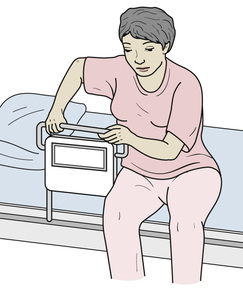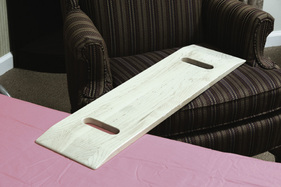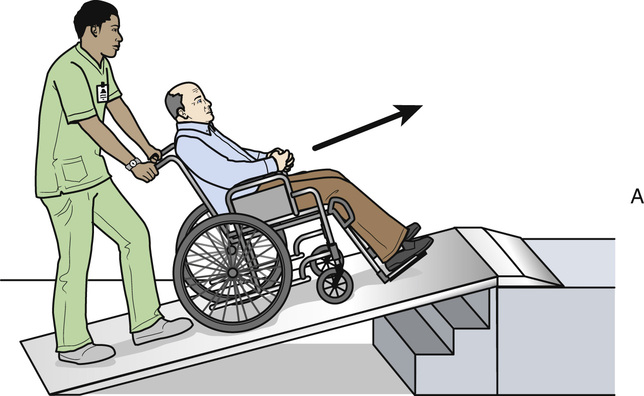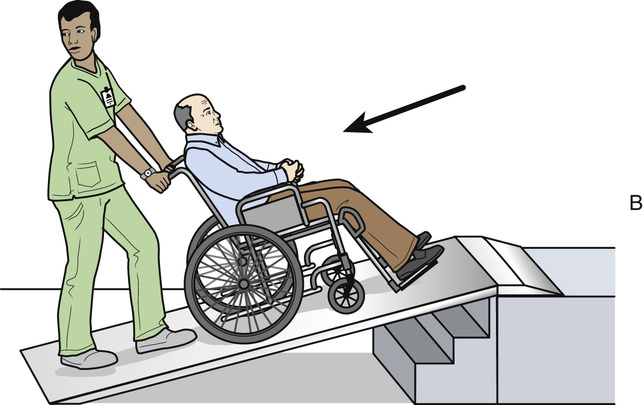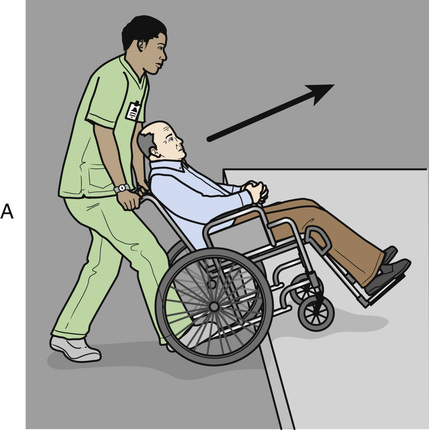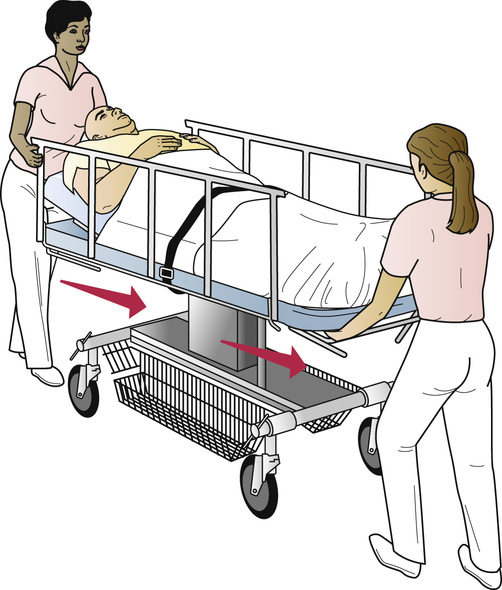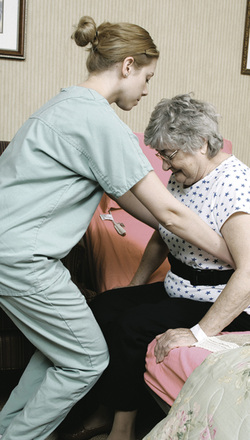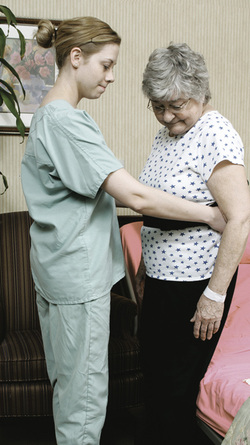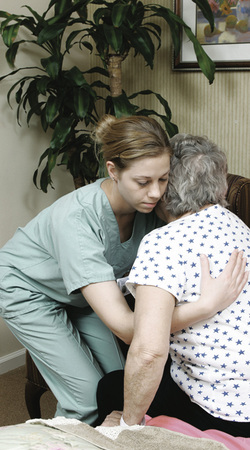Safely Transferring the Person
Objectives
• Define the key terms and key abbreviations in this chapter.
• Explain how to prevent work-related injuries during transfers.
• Identify the delegation information needed before transferring the person.
• Describe 5 functional status levels for transfers.
• Identify comfort and safety measures for transferring the person.
• Explain wheelchair and stretcher safety.
• Perform the procedures described in this chapter.
• Explain how to promote PRIDE in the person, the family, and yourself.
Patients and residents are moved to and from beds, chairs, wheelchairs, shower chairs, commodes, toilets, and stretchers. A transfer is how a person moves to and from surfaces—bed, chair, wheelchair, toilet, or standing position. The amount of help needed and the method used vary with the person’s abilities. You will assist with transfers often.
The safety measures for preventing work-related injuries and for moving persons apply to transfers (Chapters 17 and 18). So do the rules for body mechanics (Chapter 17). Protect yourself and the person from injury. Use your body and transfer devices and equipment correctly.
See Focus on Communication: Safely Transferring the Person.
See Teamwork and Time Management: Safely Transferring the Person, p. 282.
See Delegation Guidelines: Safely Transferring the Person, p. 282.
See Promoting Safety and Comfort: Safely Transferring the Person, p. 282.
Wheelchair and Stretcher Safety
Wheelchairs are useful for people who cannot walk or who have severe problems walking (Fig. 19-3). Wheelchairs are moved by:
• The person using the hand rims or his or her feet.
• The person using hand, chin, mouth, or other controls on a motorized wheelchair.
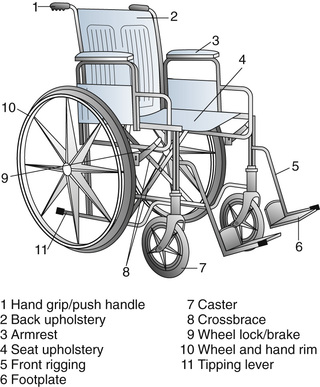
Stretchers are used to transport persons to other areas. They are used for persons who:
The stretcher is covered with a folded flat sheet, fitted stretcher sheet, or bath blanket. A pillow and extra blankets are on hand. If the nurse allows, raise the head of the stretcher to a Fowler’s or semi-Fowler’s position (Chapter 17). This increases the person’s comfort.
Follow the safety measures in Box 19-2 (p. 284) when using wheelchairs and stretchers. The person can fall from the wheelchair or stretcher. Or the person can fall during transfers to and from the wheelchair or stretcher.
Stand and Pivot Transfers
Some persons are able to stand and pivot. Pivot means to turn one’s body from a set standing position. A stand and pivot transfer is used if:
• The person’s legs are strong enough to bear some or all of his or her weight.
• The person is cooperative and can follow directions.
See Delegation Guidelines: Stand and Pivot Transfers.
See Promoting Safety and Comfort: Stand and Pivot Transfers.
Transfer Belts
Transfer belts (gait belts) are discussed in Chapter 14. They are used to:
• Support patients and residents during transfers.
• Re-position persons in chairs and wheelchairs (Chapter 18).
Wider belts have padded handles. They are easier to grip and allow better control should the person fall.
 Bed to Chair or Wheelchair Transfers
Bed to Chair or Wheelchair Transfers
Safety is important for chair, wheelchair, commode, and shower chair transfers. Help the person out of bed on his or her strong side. If the left side is weak and the right side is strong, get the person out of bed on the right side. In transferring, the strong side moves first. It pulls the weaker side along. Transfers from the weak side are awkward and unsafe.
See Focus on Surveys: Bed to Chair or Wheelchair Transfers.
See Promoting Safety and Comfort: Bed to Chair or Wheelchair Transfers.
See procedure: Transferring the Person to a Chair or Wheelchair.

